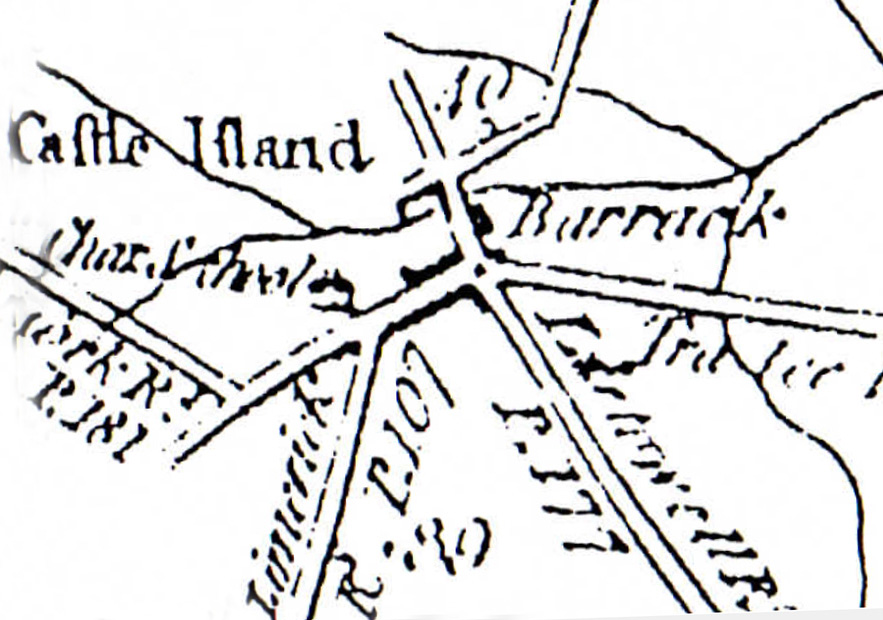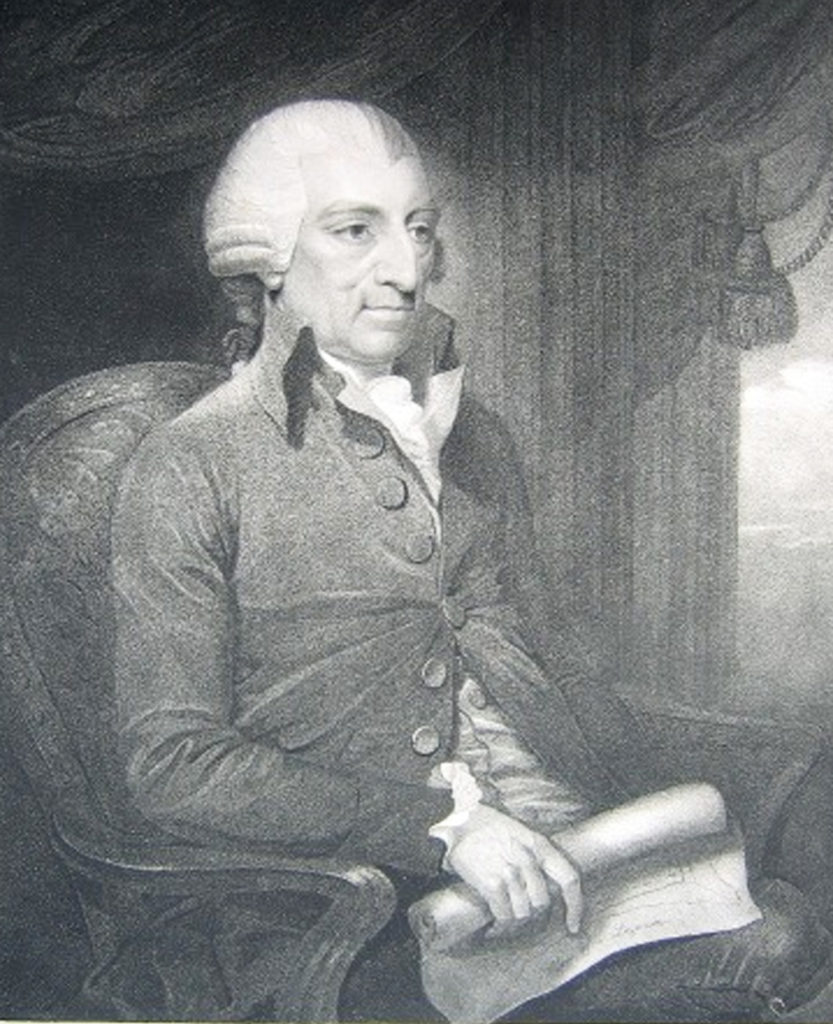The O’Donohoe Collection contains a number of articles and references to the Castleisland Charter School which operated in the town for about forty years in the closing decades of the eighteenth century.
The material includes Michael O’Donohoe’s summary of the school from its opening on 2 May 1763 until its suppression in 1802.1

An expanded account (given in a longer essay about the Church of Ireland) commenced with the rise of charity schools in the early eighteenth century:
In the early eighteenth century many charity schools were established throughout the country. There the poor children were taught, free of charge, at the expense of the local minister of religion – assisted, in most cases, by the local landlords and gentry. The children were instructed in the protestant religion and they learned a trade in preparation for apprenticeship. However, the movement was not very successful as the children returned to their homes after school. On 17 April 1730, a petition was presented to George II (1727-60) recommending "that a sufficient number of Protestant schools be established wherein the children of Irish natives might be instructed in the English tongue and the fundamental principles of true religion, to both which they are generally great strangers." On Wednesday 6 February 1733 a charter was granted instituting "The Incorporated Society in Dublin for promoting English Protestant schools in Ireland". These schools, usually with land attached, generally consisted of an equal number of boys and girls – perhaps 10 or so of each. The boys learned the basic art of the farmer and the girls learned the skills of the housewife. They were also taught some other basic skills. Some time was also spent at reading and religion. Clothing was also provided. The marriage, as they became apprenticed, of charter school boys and girls was regarded as an excellent means of expanding the Protestant population of Ireland. It was estimated that the produce of 20 original couples, in the space of one century, supposing them to marry at 21 years of age, and that each couple shall procreate only 3 children, who shall marry and procreate in the same manner, would be 7260 persons. 60 +180+540+1620+4860=7260. A grant of £5 was payable on marriage. In 1750 the Irish parliament imposed a levy on pedlars and hawkers. The proceeds, an average of about £1,150 per annum, was granted to the Incorporated Society. Another Act of 1750 placed all begging children in charter schools. This Act secured that the parents of begging children would forfeit all claims to them once they had been committed to a charter school where, according to the Act, they became children of the public. The children were placed in schools as far away as possible from their homes. Most of the day was spent in bodily labour. This resulted, in most cases, in the entire neglect of their education. The Bishop of Norwich, in his wisdom, on 2 May 1753, preached that "children who eat the bread of charity should, from the first, be habituated to earn their future subsistence. Being so trained up, they will cheerfully fill the low laborious stations for which providence designed, and these schools prepare them." Child abuse was not unknown in those days. A section of the 1750 Act stated that "if it shall happen that any schoolmaster of any such charter or other charity school, shall have carnal knowledge of any female child, above the age of 12, under his care or if any schoolmaster or schoolmistress shall consent to any other person so doing he or she being convicted thereof at the assizes, shall for such offence be three times whipped, upon three successive market days, in the county town where such person shall be so convicted". In 1750 there was a proposal to build a charter school at Castleisland where 'Robert Fitzgerald Esq, Counsellor at Law, on behalf of himself, Sir Maurice Crosbie, Arthur Crosbie Esq, John Blennerhasset Esq, Richard Meredith Esq, Edward Herbert Esq hath, by deed, made over to the Society about 26 acres of land, most of them worth 20s per acre. The aforesaid gentlemen engage to procure £200 towards building a school at this place and a subscription of £40 per annum from the neighbouring gentlemen, towards the support of the school.' The school building was completed in 1763 and opened 2 May. John Maginn was appointed master. The Right Hon Lord Brandon was a principal patron of the school. Reports In 1764, 30 boys, the children of papists, in the school. Report of Jeremiah Fitzpatrick, inspector of prisons, Castleisland Charter School, 30 September 1786. Martin Twiss, master. There were 12 boys and 10 girls in this house who read and wrote very well for their ages. The school was kept in very good order, but there are some repairs wanting over the porch and a gate in the fr. Two of the girls were apprentices, each of whom will be 21 years old before her time will be expired. The beds and bed clothes were clean and in good order. In 1784, John Howard's report, "State of the prisons in England and Wales" observed 'The state of most of the schools which I visited was so deplorable as to disgrace Protestantism and to encourage Popery in Ireland rather than the contrary". In 1787, none of the schools John Howard visited was to his entire satisfaction but he named six schools (of which Castleisland was one) as being in better order than the others. In 1788, a House of Commons Inquiry took place. A Commission was set up. In 1791, the Report of the Commission dated 29 September 1790 recorded 22 children in Castleisland Charter School, 72 past inmates apprenticed since its inception. In 1798 the charter school was occupied by the local yeomanry. Three of the garrison killed. In 1801, Report of Rev F Archer, Inspector of Prisons, 7 September 1801: The master's name is Martin Twiss who informed me that there were 43 boys on the foundation, but not more than 30 appeared. Of these only 6 could read and that badly. They were also extremely imperfect in the Church Catechism and knew nothing of the explanations thereof. A small boy who had been 6 years in the house could not explain the 9th Commandment. Mr Parker, curate of the town, said that neither the rector of the parish, nor bishop of the diocese, had ever paid so much as a casual visit to the house It is in very bad order. All the boys were ragged and bare footed. The greatest negligence discernible in every part of the institution except the dormitory which was pretty clean. Having considered other reports on the school, it is recorded that on 16 February 1802: The committee of fifteen, having taken into mature consideration, the present state of the Charter School of Castleisland, and how far it had, for the series of years past, answered the purposes for which it was established – Resolved, that the said school being in the heart of a very remote and Popish country, and from the nearest post town 8 miles – that there being a local committee that scarcely ever attends or occasionally visits, the nearest member of which resides 6 miles from the school, that the said school being much out of repair, and in very bad order in every respect – that the business thereof for a length of time past, having been extremely ill conducted, particularly with respect to the clothing and education of the children, that there having been great difficulty experienced in apprenticing boys educated in said school, not more than 6 having been apprenticed during the last 7 years, that therefore it is the unanimous opinion of this committee that Castleisland is an improper situation for a charter school and that therefore the school there ought to be forthwith suppressed. In 1806, a pamphlet written by William Disney, a Commissioner of Education, recorded the school at Castleisland was 'suppressed for gross mismanagement, long persisted in, in spite of remonstrance after all hopes of producing reformation through the assistance of any person in the neighbourhood, had been abandoned, and the master and his family with just but necessary severity were turned adrift without provision'. A Commissioner's report, 21 April 1809, recorded the Diocesan School for Ardfert was kept at Castleisland in a house formerly a charter schoolhouse. The master was Rev J Mahon (still there in 1814).2

An editorial of 1873 picked up on the history of the building from Michael’s point of departure in 1809:
The Charter School lapsed some time before Parson Mahon and Penelope Gun his wife (who were father and mother of the gallant Anthony Mahon, protégée of the late Lord Brandon) had established a flourishing boarding school there for the sons of the gentry … It was long the residence of Pierce Chute Esq, JP … it belongs now to Doctor Harold, under the name of Castle View. It is advertised to be let.3
The condition of schooling at this period was given in a separate editorial on a charity sermon preached in Castleisland by Very Rev Father Fox, OMI. Describing Castleisland as one of the poorest districts of the county, Rev Fox revealed there were upwards of four hundred children being educated by the Presentation Order:
The principal schools being crowded to excess, the good nuns have been obliged, during the last six years, to collect, day after day, a large number of children in a damp, miserable cabin for instruction. The cabin has now become past repair and is fraught with the greatest danger to the health and even the lives of the poor children and their devoted teachers.4
__________________ 1 IE Mod/13. Summary formed from an article by Michael Quane, 'Castleisland Charter School', published in the Journal of the Kerry Archaeological and Historical Society, No 1 1968 (pp25-40). 2 IE Mod/15/15.1/15.1.33-36. This account is included in a longer essay about the Church of Ireland in Castleisland. 3 Tralee Chronicle, 5 December 1873. Note on Dr Richard Harold, a Justice of Peace who died at Castle View in August 1904, in IE Mod/37/37.3. Some genealogical work on his family including his son St John in IE MOD/55/55.1/55.1.26 and IE MOD/58/58.16/58.16.4. Note on the Harnett family who occupied this property before Dr Harold in IE Mod/57. 4 Freeman's Journal, 1 February 1868. Rev Fox revealed how several of the nuns had been laid up with severe illness and one had died of fever. Reference to the Presentation Order, IE MOD/57.


